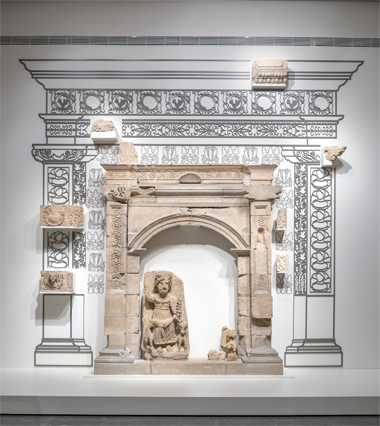AMMAN — The Cincinnati Art Museum is “honoured to work closely” with Jordanian museums and institutions, a relationship that has spanned decades, noted its curator of South Asian Art, Islamic Art and Antiquities, Ainsley M. Cameron.
Cameron said that on her most recent trip to Jordan she visited Amman, Petra, Madaba, and the site of Khirbet et-Tannur, meeting with colleagues and officials “to discuss our multi-year project to reinstall the ancient Middle East gallery”.
Also accompanying her on the visit was Sarah Wenner, a Nabataean specialist with over a decade of experience researching and working in Jordan, and Andrew W. Mellon, a curatorial fellow at the Cincinnati museum, she said.
Khirbet et-Tannur, located north of Tafileh, was excavated in 1937 by Nelson Glueck working in collaboration with the Department of Antiquities of Transjordan, Cameron said.
She added that Glueck, a Cincinnatian himself, was then based in Jerusalem and was well known in the region for his archaeological survey work.
“He was invited to work at Tannur and led a large team to excavate the site over two seasons,” she said. She also noted that “as was the norm at the time”, the archaeological finds were divided and half has been cared for by the Cincinnati Art Museum since 1939.
“We are honoured to be the home for these collections and understand their great significance to both the history of Jordan as well as their importance today,” Cameron stated.
Regarding the collection of artefacts from Khirbet et-Tannur, Cameron said: “We are honoured to steward the most significant collection of Nabataean material culture outside of Jordan. At the conceptual centre of this collection are the material remains from Khirbet et-Tannur, which include the altar platform and multiple sculptural fragments from the site.”
Moreover, with these fragmentary remains, scholars are able to explore the history of the architectural programme of the temple, imagining how it once stood before the earthquake destroyed much of the site in 363 AD, she said.
“We established a thematic framework to display the collections that encourages our visitors to make connections across empires and civilisations, as well as between past and present. This approach has proved successful,” Cameron continued.
“Cincinnatians and visitors to our city can better understand the collections and cultures we are so honoured to present,” she added.
The curator said the museum is looking forward to continuing to develop close ties with Jordanian colleagues, “perhaps through a joint exhibition project, further research opportunities, and more”.
“When we tour visitors through our galleries, I always encourage them to travel to Jordan as well,” Cameron said.
